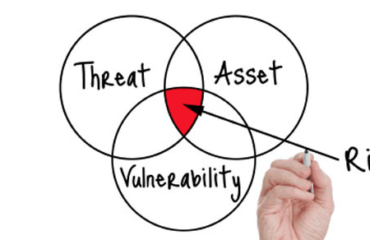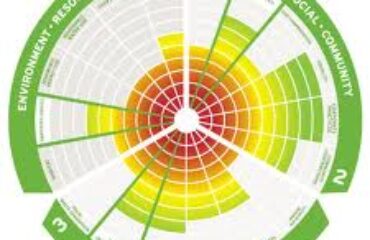
Toxic Building Materials in Residential Construction
A reporter from Angie’s List Magazine just asked for my opinion on toxic building materials in residential construction… and while writing my response I realized there was some valuable information to share. Hopefully Angie’s List Magazine will decide to run the piece.
Here is my response to some great questions from Brittany Paris:
1) What do you consider to be the most toxic building materials used in residential construction today – and why?
PVC, lead, mercury, and halogenated flame retardants would be top my list. Each of these common building components have known health and toxicity problems, and can become deadly under the wrong conditions.
PVC: Polyvinyl Chloride has a tremendous upstream toxicity impact (chemical manufacturing in “cancer alley”), releases phthalates during it’s use phase of life, and releases dioxin when burned. Dioxin is one of the most toxic substances known to exist. PVC and PVC-byproducts contain known carcinogens, and developmental and reproductive toxicants.
Lead: We’re learning that lead exposure – at even lower rates than previously known – has negative effects in the form of cancer, and developmental and reproductive toxicity. Around the country you can still buy faucets and lead-containing solder to be used for potable water. In fact, in the US, even “lead-free” solder and flux is allowed to contain lead! So you have to specify “100% lead-free” if you’re serious about eliminating lead.
Mercury: There is still mercury in some electronics and thermostats, but the most significant source in the residential sector is in lighting. Since the massive rollout of Compact Fluorescent Lights (CFLs), several states and the EPA have published clean-up protocols for broken CFLs. Mercury is a known developmental toxicant, and it’s suspected of many other health effects.
Halogenated Flame Retardants: HFRs are added to too many building materials – even when they are not needed. Fire scientists, toxicologists, and even firefighters are raising alarm bells around the world. There is no significant fire safety benefit from HFRs in foam or wiring behind walls or under concrete slabs, yet current US codes requires HFRs in these applications. Sadly, during a fire, HFRs release significantly more smoke and very toxic gases that harm/kill occupants and firefighters. The European Union has already banned some HFRs, but the US lags behind. There is currently a concerted effort in the green building movement to remove HFRs from materials when there is no added fire safety benefit.
2) Are you seeing a shift in the green building community to phase out some of these noxious materials?
Absolutely. There are numerous green building rating systems that now “give points” for avoiding these known hazards. At last week’s GreenBuild Conference – the largest green building conference in the country – CA Governor Jerry Brown really hammered home the point that “green buildings” need to be healthy, and not just energy efficient.
Major architecture and engineering firms are voluntarily specifying alternatives to these chemicals, and huge companies (e.g., Google) are going through great extremes to reduce their use in buildings. So forward thinking designers are meeting more conscientious consumers – and a major shift is taking place in the design/build industry.
3) What are some alternative building materials for those you listed above?
PVC piping for potable water can easily be swapped out with copper, PEX or polypropylene, and there are even less expensive alternatives for non-potable water piping.
Lead in potable water plumbing should be avoided where possible. Most brass fittings and valves do contain trace amounts of lead, but eliminating lead from flux and solder is low hanging fruit.
Light Emitting Diodes (LEDs) are far more energy efficient than CFLs, and they do not contain mercury.
Halogenated Flame Retardants (HFRs) are in all foam products in the US, and now the only avoidance strategy available is to not specify foam. There are alternatives to PVC- and HFR-jacketed wiring, but the cost premium to avoid these toxins is so high it is out of the reach of most American home builders.
4) Do you encounter clients who are sickened by the effects of toxic construction materials?
Yes, every day! Half of our business focuses on green building consulting for new buildings or remodels, and the other half is devoted to environmental testing (industrial hygiene) for existing buildings. The number of people sick and suffering in buildings is alarming, and the stories we hear every day are heartbreaking. It doesn’t have to be this way, but sick buildings are contagious, and our jobs are secure for the foreseeable future.
5) How can a consumer find out what a building product contains?
I wish there was an easy answer. Unlike food labeling laws that require full ingredient disclosure, intellectual property rights provide a corporate veil of secrecy over many common building materials in the US. Most products disclose their primary ingredients on mandated Material Safety Data Sheets (MSDS), but it’s not required they post all ingredients. It’s a two-pronged movement toward healthy building materials: on one side there are growing precautionary lists of chemicals to avoid, and on the other side are people demanding more transparency!
Pharos is an online database of materials and their ingredients, but it’s voluntary and therefore doesn’t have enough materials cataloged to be very useful when evaluating the material palette for an entire building.
The push for transparency is from many diverse stakeholders. But just last week the Health Product Declaration Collaborative made it’s big debut, and moving forward this non-profit lead by respected industry leaders will undoubtedly become the de facto umbrella group organizing the push for transparency. Keep an eye out for many major product manufacturers to start completing Health Product Declarations (HPDs) and disclosing more ingredients.
6) Anything else you’d like to mention?
Healthy building is about much more than air quality. Light quality, acoustics, electromagnetic fields, and connections to nature are all part of a truly healthy building.
So many green building consultants focus primarily on energy efficiency, and some energy efficiency measures can actually harm occupant health.
We frequently use two images to remind people of how important health is: 1) from the American Lung Association, “when you can’t breathe, nothing else matters,” and 2) If you were driving your kid uphill to the hospital and he was having an asthma attack – would you drive your Prius slow to improve your fuel economy?
I like to think these help people frame the importance of healthy buildings and of avoiding toxic building materials. Without our health – what do we have?




